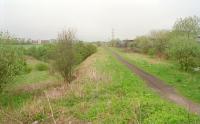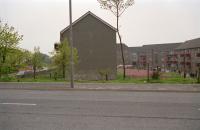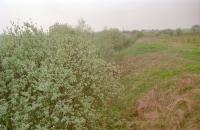Ballochney Railway
Introduction
This railway is closed. The line ran east from Kipps, connecting many mine workings to the Monkland and Kirkintilloch Railway, allowing minerals to be forwarded by the Forth and Clyde Canal to Glasgow or Edinburgh, or to be used in the local iron industry around Coatbridge. Going east from Kipps the line climbed the Ballochney Incline (fortunately loaded coal trains were going downhill, pulling the empties uphill). The line provided the first passenger station for Airdrie. No part remains open today. Today's Airdrie station is located on a newer line which bypassed the inclline. It survives as a network of paths and abandoned trackbeds to the north of Airdrie. Opencast mining has robbed us of its remains in at the eastern, Ballochney, end.
Why built
The line connected a myriad of mines north of Airdrie to the growing railway network, iron works and Forth and Clyde Canal. Many of the shareholders and directors had a vested interest in the line being industrialists or mine owners.
Thomas Grainger was the engineer. In its early years it was a highly profitable line, with an impressive 20% dividend.
Branches were added to the main stem of the line as suited the needs of industry.
Dates
Portions of line and locations
This line is divided into a number of portions.
Kipps to Ballochney
From Kipps Junction to Ballochney Colliery.
This was the wagon works of the Ballochney Railway, on the west side of the Kipps Level Crossing. It was a timber building of one road, approached from east. It was located to the east of later Kipps Shed, which first apears on 1858/60 Ordnance Survey map.
...
This was a marshalling yard of around 17 single ended sidings east of Kipps Junction. It was located on the south side of the Ballochney Railway and was approached from the west.
...
See also
Monkland and Kirkintilloch Railway
This was a junction which grew to serve numerous lines and yards.
...
See also
North Monkland Railway
Monkland and Kirkintilloch Railway
A series of sidings were on the north side of the Ballochney Railway, east of Kipps junction and west of Kipps Junction Incline Foot.
...
This open hearth steel works was located at Kipps, Airdrie. The works was fitted with three 40 ton open hearth furnaces. It produced steel billets.
...
This was the incline foot for the lower Ballochney Incline (Commonhead Incline) which ran east to Commonhead and Rawyards. To the west was Kipps Junction.
...
See also
Rochsoles Branch (Ballochney Railway)
This location is considered to be the first station in, or rather near, Airdrie.
...
This station was located between the upper and lower Ballochney Inclines on a short level section. It was at the junction between the Ballochney Railway and the Hallcraig Street Branch (Ballochney Railway) which ran to Airdrie Hallcraig Street.
...
See also
Hallcraig Street Branch (Ballochney Railway)
This was a single platform station located to the immediate east of a junction, level crossing and the Ballochney Incline. It was on the Ballochney Railway at the point of division between the lines to Clarkston (Wester Moffat) and Ballochney Colliery.
...
Owned by R Y Pickering Wagon Works.
...

Ewan Crawford 03/05/1997

Ewan Crawford 03/05/1997
This was the junction between the Ballochney Railway of 1828 and the Dykehead Junction of 1835. The original line was double track and branch single.
...
Clarkston Branch
From Rawyards to Clarkston (West Moffat).
This was a single platform station located to the immediate east of a junction, level crossing and the Ballochney Incline. It was on the Ballochney Railway at the point of division between the lines to Clarkston (Wester Moffat) and Ballochney Colliery.
...
This factory was opened on the north east edge of Airdrie at Rawyards in 1949 by Boots of Nottingham.
...
This was a junction between the Ballochney Railway's Clarkston (West Moffat) branch of 1828 and the later Calderbank Iron Works Branch (Monkland Railways) of 1855. The lines here were single track.
...
See also
New Monkland Line (Monkland Railways)
Calderbank Iron Works Branch (Monkland Railways)

Ewan Crawford 03/05/1997
Clarkston (Wester Moffat) or (Wester Monkland) was a terminus. As a passenger terminus it was probably only open briefly in the summer of 1832, closing in October.
...







